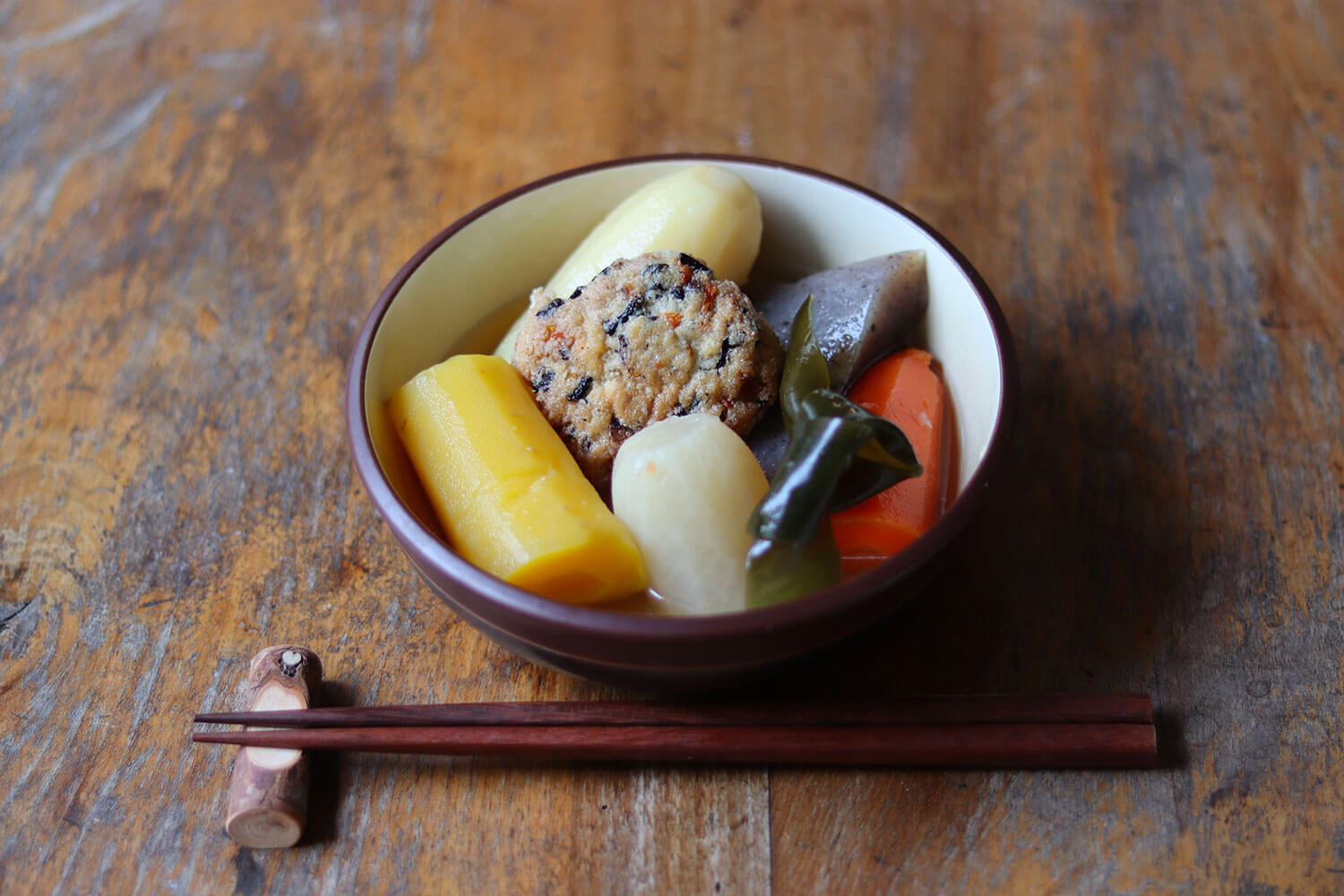Vegan Recipe for Japanese Stew by Lina and Setsuko Kurata
‘Oden’ is a typical winter dish that can be made at home but that can also be found in supermarkets in Japan.

© Lina Fievet
Japanese stew, or oden, is a dish that originates from Kanto (the urban fabric between Tokyo and Yokohama), and has thus earnt it the nickname of ‘Kanto stew’, which first appeared in Japan during the Meiji era (1868-1912). It is a typical winter meal that Setsuko and Lina Kurata were keen to include in their cookbook Japon, la tradition du végétal (‘Japan, the Vegetable Tradition’), which compiles vegan recipes made using seasonal ingredients.
Oden is a popular dish that, as Setsuko Kurata explains, can be found very easily: ‘In Japan, you can find lots of little traditional stands in side streets that serve oden, where you can generally choose the vegetables.’ As well as from yatai, oden can be purchased from konbini (since 1979), where it is very often found next to the checkout, kept warm in a broth.
The chefs offer a tip: make a little more than for one meal because Japanese stew is ‘even better the following day’.
Ingredients
200 g carrots
150 g daikon (white radish)
150 g potatoes
120 g konjac
10 g dried konbu
1 l dashi
2 ganmodoki
1⁄2 tbsp sake
1⁄2 tbsp mirin
1⁄2 tbsp sugar
1⁄2 tbsp soy sauce
1 pinch salt
Method
Wash, peel and cut the carrots, daikon and potatoes into large pieces. Set aside.
Boil some water in a saucepan and add the konjac block. Cook over a high heat for 1 minute. Drain the konjac and cut into large rectangular pieces. Set aside.
Place the carrots, daikon, potato and konbu in a saucepan and pour in the dashi so it covers the vegetables entirely. Cook over a high heat with the pan covered.
As soon as the water starts to boil, reduce to a low heat. Add the pieces of konjac and cook for 10 minutes. If the vegetables are not entirely covered with the dashi, add water.
Add the sake, mirin and sugar. Cook with the pan covered for 5 minutes.
Add the ganmodoki and cook for 5 more minutes. As soon as the ingredients are soft, add the soy sauce and salt. Cook for another 5 minutes with the pan covered. Taste.
If you want a sweeter flavour, add more mirin. If you want a saltier flavour, add more soy sauce.
Serve hot.
Japon, la tradition du végétal (‘Japan, the Vegetable Tradition’) (2021), a recipe book by Setsuko and Lina Kurata published by éditions La Plage (not currently available in English).
Setsuko and Lina Kurata are mother and daughter. They created Japon, la tradition du végétal as a joint work that combines their own recipes with those of Setsuko’s mother (Lina’s grandmother) to produce a digest of three generations of family recipes. Japon, la tradition du végétal is their first book.

© Éditions La Plage
TRENDING
-
The Tattoos that Marked the Criminals of the Edo Period
Traditional tattoos were strong signifiers; murderers had head tattoos, while theft might result in an arm tattoo.

-
Chiharu Shiota, Red Threads of the Soul
Last year, more than 660,000 people visited the retrospective 'Chiharu Shiota: The Soul Trembles' exhibit at the Mori Art Museum.

-
‘Before Doubting Others, Doubt Yourself. Who Can Truly Say a Dish Isn’t What It Used to Be?’
In ‘A Non-Conformist’s Guide to Surviving Society’, author Satoshi Ogawa shares his strategies for navigating everyday life.

-
The Story of Sada Yacco, the Geisha who Bewitched Europe
Described by Dazed magazine as the first beauty influencer, she has been restored to her former glory since 2019.

-
Ito Jakuchu's Naturalist Paintings
From 15 September until 14 October 2018, the Petit Palais showcased the artist's iconic ‘Images of the Colourful Realm of Living Beings’.





